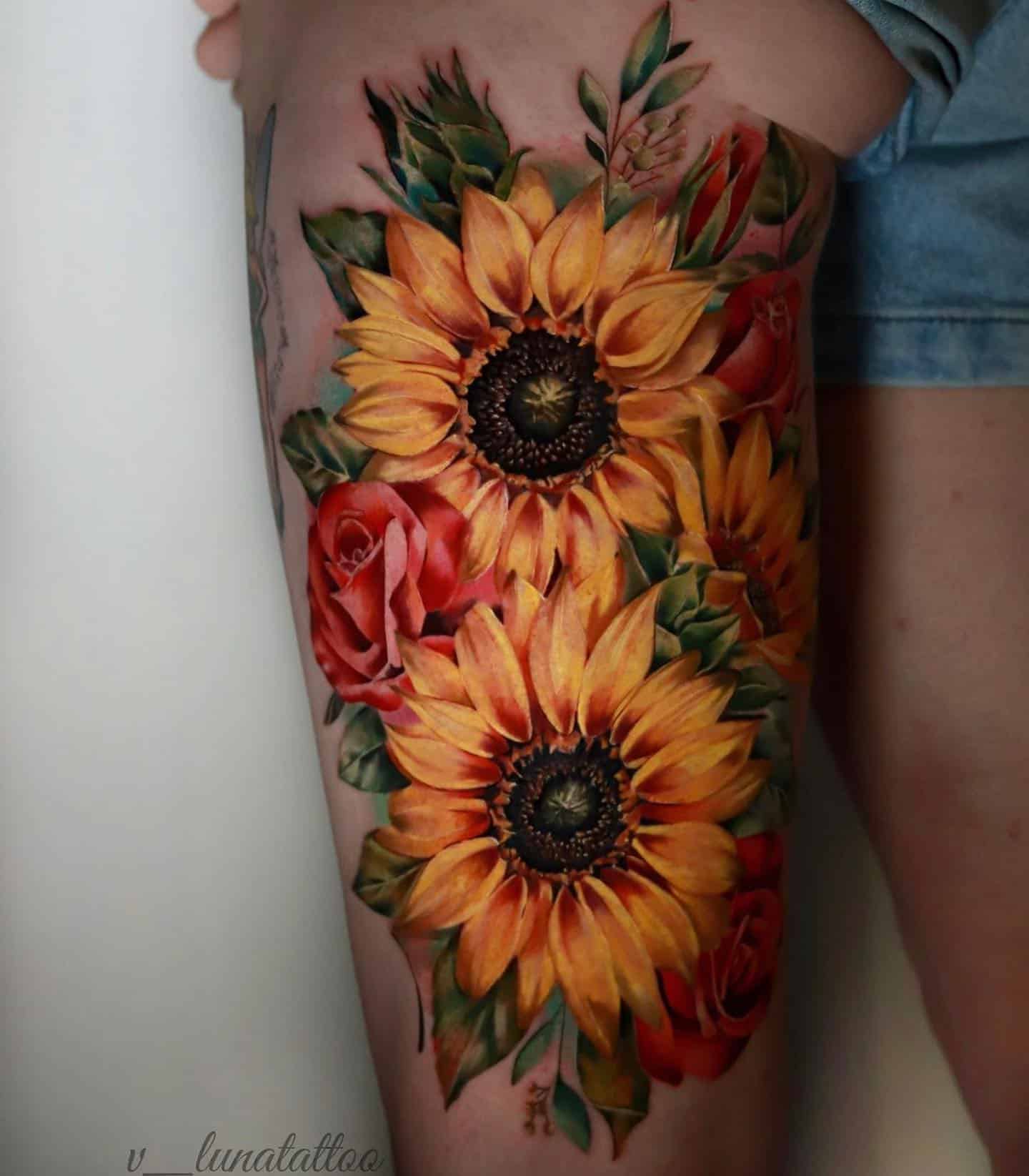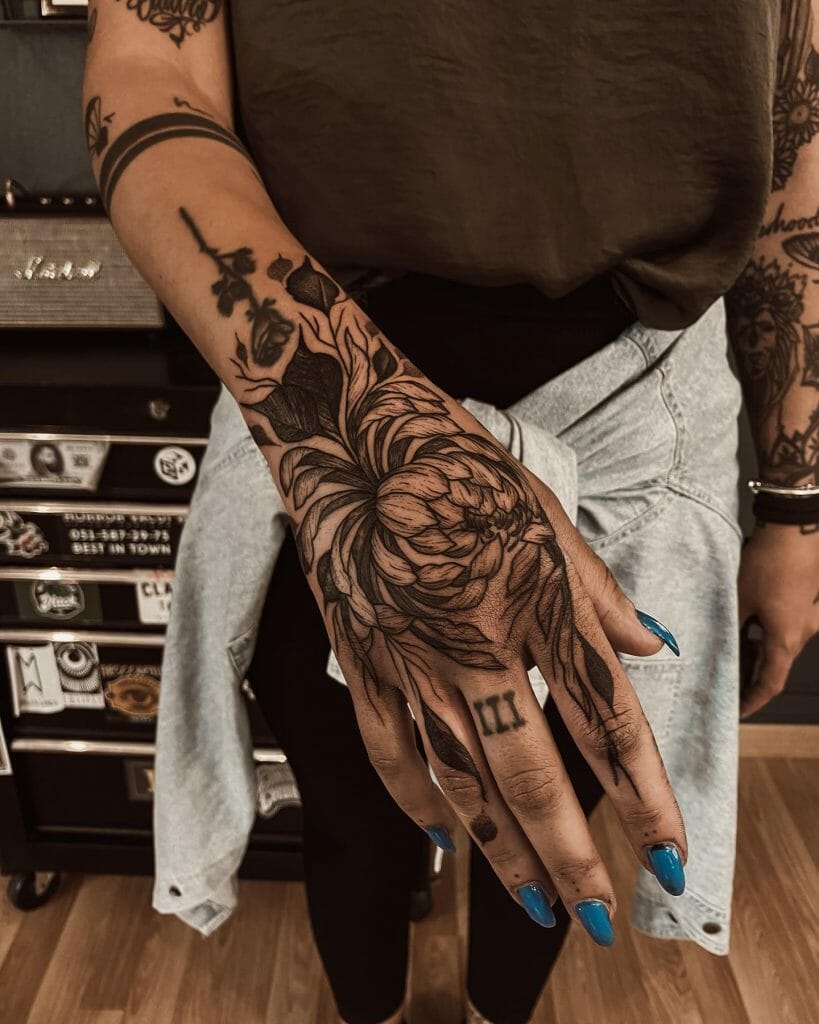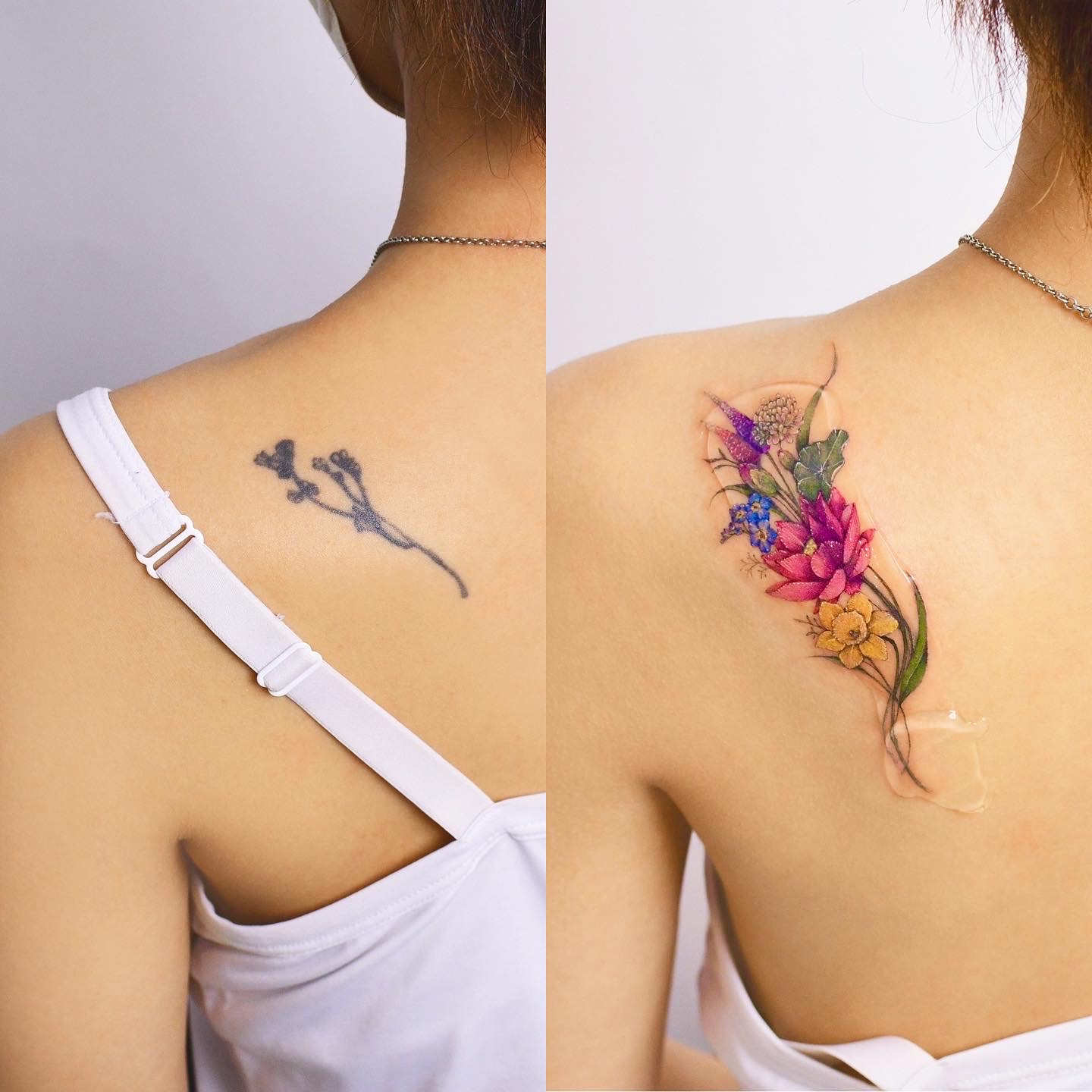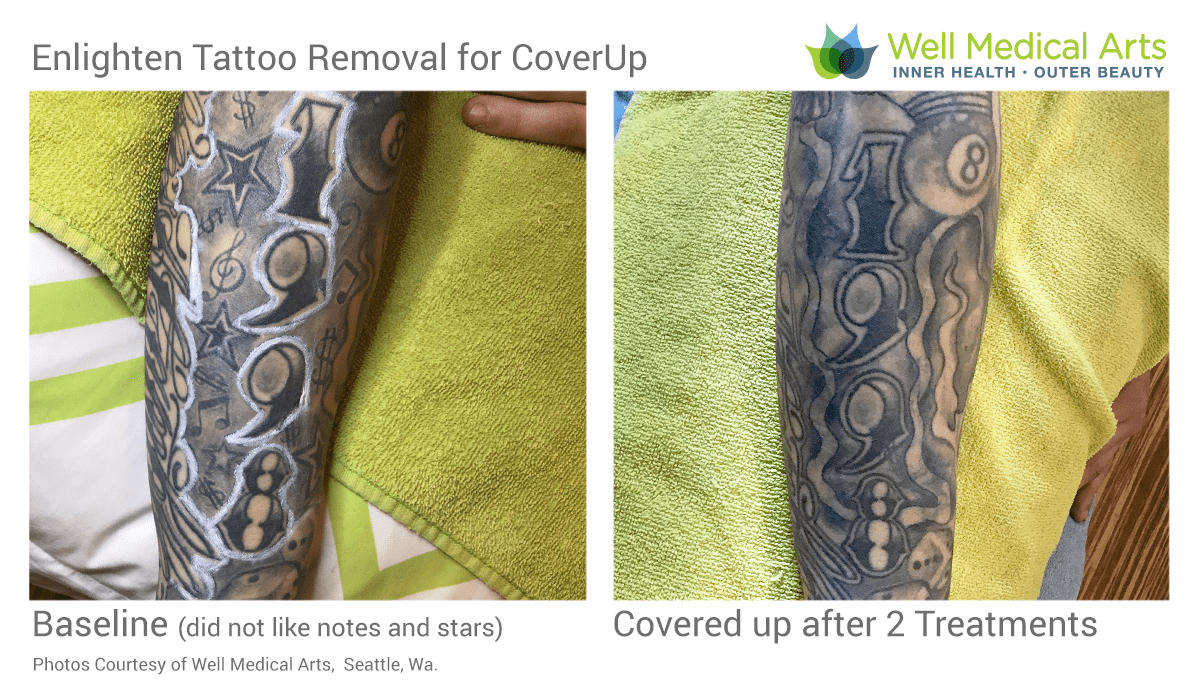
Okay, so you’re staring at that sunflower tattoo.
Maybe it’s faded.
Maybe the design isn’t your vibe anymore.
Maybe it just reminds you of a time you’d rather forget.
Whatever the reason, you’re probably wondering: Can a sunflower tattoo be turned into a cover-up tattoo?
Let’s get into it, because I’ve seen it all.
The Sunflower Situation: Is Cover-Up Possible?
Seriously, the first question is always: can it actually be done?
The good news?
Probably, yeah.
Sunflowers, while beautiful, aren’t usually super dense with dark ink.
That gives us artists some wiggle room.
But, and this is a big but, it depends.
Key Factors That Determine Cover-Up Success
Think of your sunflower as a starting point.
We need to assess the landscape before building a new house, right?
Here’s what I look at:
- Size and Placement: A small sunflower on your ankle is easier to cover than a massive one across your back. Placement matters too, some areas handle cover-ups better than others.
- Ink Density and Color: Dark, heavily saturated black ink is the enemy. Light colors and faded lines? Much easier to work with.
- Your Skin Tone: Lighter skin tones offer more flexibility in color choices for the cover-up.
- Your Desired Cover-Up Design: A delicate watercolor butterfly probably won’t cut it. We need something bold enough to mask the existing ink.
Sunflower Cover-Up Ideas: From Floral to Fierce
Okay, let’s brainstorm.
Here are some popular and effective cover-up design ideas:
- Darker, More Detailed Floral: Think roses, peonies, or even a different type of sunflower with more intricate shading.
- Geometric Patterns: Bold geometric shapes can effectively camouflage the original tattoo.
- Abstract Designs: Abstract art offers a lot of freedom to incorporate and conceal existing lines.
- Animals with Bold Outlines: Lions, wolves, or even mythical creatures like dragons can work wonders.
- Blackwork: Solid black ink can completely obliterate the old tattoo, but it’s a commitment!
Real-Life Example: I once covered a faded sunflower on someone’s shoulder with a stunning blackwork raven. The raven’s wings perfectly obscured the original floral design.
Tips for a Successful Sunflower Tattoo Cover-Up
Don’t rush into this.
A bad cover-up is worse than the original tattoo.
Here’s my advice:
- Find an Experienced Artist: Look for an artist who specializes in cover-up tattoos. Check their portfolio for examples of their work.
- Communicate Clearly: Tell your artist what you don’t like about the original tattoo and what you do want in the cover-up.
- Trust Their Expertise: Be open to suggestions from your artist. They know what will work best.
- Be Prepared for a Larger, Darker Tattoo: Cover-ups often require a larger and darker design than you might initially expect.
- Multiple Sessions Might Be Needed: Depending on the complexity of the cover-up, you may need multiple sessions to achieve the desired result.
Preparing for Your Cover-Up Appointment
Okay, you’ve found your artist and you’ve agreed on a design.
Now what?
- Stay Hydrated: Drink plenty of water in the days leading up to your appointment.
- Moisturize Your Skin: Keep your skin hydrated to help the ink absorb better.
- Avoid Sunburn: Sunburned skin is a no-go for tattooing.
- Get a Good Night’s Sleep: Being well-rested will help you tolerate the pain better.
- Eat a Meal Beforehand: Avoid getting tattooed on an empty stomach.
Aftercare is Crucial
Don’t slack on aftercare!
It’s just as important as the tattoo itself.
Follow your artist’s instructions carefully.
Typically, this involves:
- Keeping the tattoo clean and dry.
- Applying a healing ointment.
- Avoiding direct sunlight.
- Not picking at the scabs.
FAQ: Your Burning Questions Answered
- Will the old tattoo completely disappear? Not always. Some faint lines or shadows may still be visible, especially in direct sunlight.
- Does it hurt more to get a cover-up tattoo? It can, as the artist is working over already tattooed skin.
- How much does a cover-up tattoo cost? It depends on the size, complexity, and artist’s rates. Expect to pay more than you would for a new tattoo of the same size.
- Can I get laser tattoo removal first to lighten the sunflower? Absolutely! This can make the cover-up process easier and give you more design options.
Final Thoughts: Embracing the Transformation
Getting a cover-up tattoo is a big decision.
It’s a chance to transform something you no longer love into something you’re proud to show off.
Do your research, find a skilled artist, and be patient with the process.
Ultimately, knowing can a sunflower tattoo be turned into a cover-up tattoo is just the first step.
















